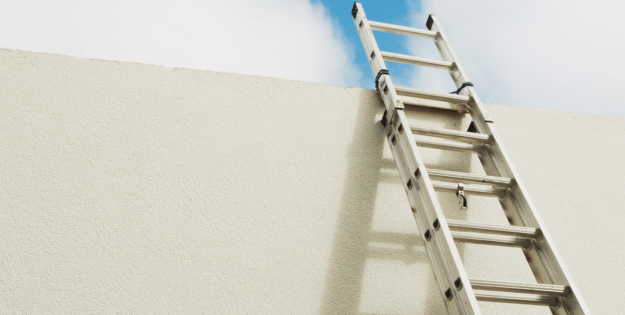Navigating the world of extension ladders can be daunting, with a multitude of options tailored for various needs. Whether you’re a homeowner needing to clean gutters or a professional tackling construction tasks, finding the right ladder is crucial. Extension ladders, with heights reaching up to 40 feet, offer the versatility to access those hard-to-reach places safely and efficiently.
Choosing the best extension ladder involves assessing your specific needs and understanding the features that enhance safety and convenience.
Top Amazon Sellers
Key Takeaways
- Understanding Extension Ladders: Key insights include the components and operational mechanisms of extension ladders, ensuring they are leaned against stable structures for safe use.
- Safety First: Highlight essential safety practices such as avoiding the top four rungs and maintaining a safe ladder angle to minimise fall risks.
- Choosing the Right Ladder: Factors to consider include ladder types, materials, height, and weight to suit different tasks and user needs, from homeowners to professionals.
- Material Matters: Emphasise the importance of selecting durable materials like aluminium for portability or fibreglass for non-conductivity when working near electrical hazards.
- Proper Setup and Use: Explore practical tips for setting up ladders safely, such as maintaining a 1:4 height-to-base ratio and using stabilisers for extra security.
- Maintenance for Longevity: Regular inspection, cleaning, and correct storage are essential for prolonging the life of your extension ladder and ensuring ongoing safety.
Understanding Extension Ladders
Extension ladders consist of two sections, the base and the fly, which nest within each other. The fly section extends using an integrated pulley system, allowing for height adjustment. They lean against a stable structure, making them suitable for exterior tasks like painting and cleaning high gutters. Unlike stepladders, extension ladders aren’t self-supporting, so proper angle and surface support is crucial for safety. The best extension ladders include safety features such as locking mechanisms and rubber feet for stability. Safety guidelines recommend not standing on the top four rungs to ensure secure footing. The user’s height and the ladder’s incline impact reach height, with an extension ladder’s reach generally one foot lower than its maximum extension.
Key Features to Consider
Choosing the best extension ladders involves examining various factors to ensure safety and efficiency. When considering a purchase, focus on the following aspects:
Type of Ladder
Select from single, double, or triple section ladders based on intended use. Single section ladders provide simplicity while double and triple sections offer extended reach and flexibility for various tasks.
Material and Durability
Opt for ladders made from aluminium or fibreglass for strength and longevity. Aluminium offers lightweight benefits while fibreglass provides electrical insulation, essential for tasks near power sources.
Height and Reach
Determine the ladder size necessary for tasks by considering its maximum extension and your required reach. Ensure the chosen ladder safely accommodates your needed height without compromising stability.
Weight and Portability
Evaluate ladder weight against ease of transport to ensure practicality on job sites. Lighter ladders enhance mobility but must not compromise on durability and stability for secure use.
Best Extension Ladders for Different Users
Choosing the best extension ladders depends on specific needs. Various models cater to homeowners, professional tradespeople, and those working in challenging conditions.
For Homeowners
Homeowners benefit from lightweight, easy-to-manoeuvre ladders. Extension ladders reaching 12 to 20 feet suit typical two-storey homes well. Aluminium models offer durability and resistance to rust, ideal for occasional maintenance tasks like gutter cleaning or painting.
For Professional Tradespeople
Professional tradespeople need robust ladders that ensure safety and stability. Extension ladders certified for higher weight capacities provide reliability for daily, demanding tasks. Fibreglass options are excellent, offering non-conductivity and enabling safe work around electrical hazards while enduring rigorous environments.
For Use in Challenging Conditions
Working in challenging conditions requires extension ladders with enhanced grip and security features. Models with non-slip feet and strong locking mechanisms ensure stability on uneven surfaces. Fibreglass materials offer resistance to electrical shocks, making them preferred for hazardous environments.
How to Set Up an Extension Ladder Safely
Setting up an extension ladder involves several key steps to ensure safety and functionality. Place the ladder on a stable, firm surface to prevent slipping. Maintain a 1:4 ratio between the height of the ladder and its distance from the wall; for every four feet of height, position the base one foot away. Secure all locking mechanisms before climbing. Utilize a stabiliser if working near gutters or windows to distribute weight evenly and prevent damage. Avoid standing on the top four rungs to reduce the risk of falls. If the ladder extends over 3 metres, use a stabiliser bar for additional support. Following these guidelines enhances safety without compromising on the ladder’s reach capacity.
Tips for Safe Use and Maintenance
Safety measures are crucial for the best extension ladders. Before use, inspect for any visible damage or wear. Damaged segments can compromise stability. Ensure all locking mechanisms function correctly to prevent accidental collapse. Always deploy on a flat surface to maintain balance; uneven surfaces increase fall risks.
For maintenance, keep ladders clean by removing dirt and debris. Regular lubrication of moving parts enhances functionality and ensures smooth operation. Store ladders in a dry, covered area to prevent corrosion. Metal ladders especially benefit from protection against moisture. Conduct frequent checks to identify wear and improve lifespan.
When climbing, maintain three points of contact for optimal safety. Avoid carrying heavy items while ascending or descending ladders to reduce injury risk.
Conclusion and Top Picks
Choosing the best extension ladder involves a careful evaluation of various factors such as type, material, height, and weight. It’s essential to select a ladder that meets the specific requirements of the task while ensuring safety and functionality. Homeowners and professionals alike should prioritise ladders that offer stability, durability, and ease of use. Safety remains paramount, with proper setup and maintenance practices critical to preventing accidents. By considering these aspects, individuals can confidently select an extension ladder that enhances their efficiency and safety in any task.
Frequently Asked Questions
What factors should I consider when choosing an extension ladder?
When selecting an extension ladder, consider the ladder’s type, material, height, and weight. Choose the right type—single, double, or triple section—based on your tasks. Opt for aluminium or fibreglass materials due to their strength and durability. Determine the necessary height without compromising stability, considering that reach height is typically one foot lower than the ladder’s extension. Finally, balance the ladder’s weight for portability and stability.
How can I ensure safe use of an extension ladder?
To use an extension ladder safely, position it on a stable surface and maintain a 1:4 height-to-distance ratio from the wall. Ensure all locking mechanisms are secure before climbing and use a stabiliser for added safety, especially near gutters or windows. Avoid standing on the top four rungs, and consider a stabiliser bar for ladders exceeding 3 metres. Regular inspection and maintenance, including checking for damages and lubricating moving parts, are essential for safety.
What are the advantages of fibreglass extension ladders?
Fibreglass extension ladders offer significant advantages, especially for tasks near electrical hazards. They are non-conductive, reducing the risk of electrical shock compared to metal ladders. Additionally, fibreglass is highly durable and resistant to weather conditions, making these ladders ideal for both industrial and residential use. Despite being heavier than aluminium, their safety features make them a reliable choice for professionals working near power sources.
What extension ladder height is typically necessary for homeowners?
For most homeowners, a ladder height of 12 to 20 feet is sufficient for common tasks like cleaning gutters or painting. This range provides adequate reach for single-story homes and routine maintenance. Ensure the ladder height allows you to work comfortably and safely without overstretching. Assess your specific needs based on the height of your home’s exterior features to ensure effective and safe use.
How do telescoping ladders differ from traditional extension ladders?
Telescoping ladders offer the convenience of easy storage and transport, collapsing to a compact size. Unlike traditional extension ladders, they are adjustable to various heights within their maximum extension, suiting diverse tasks. While offering flexibility, it’s crucial to ensure their locking mechanisms are secure during use. Although they provide less reach than some traditional models, they are ideal for occasional use and limited space environments.












